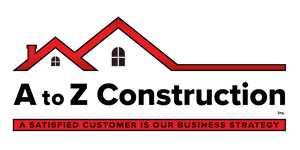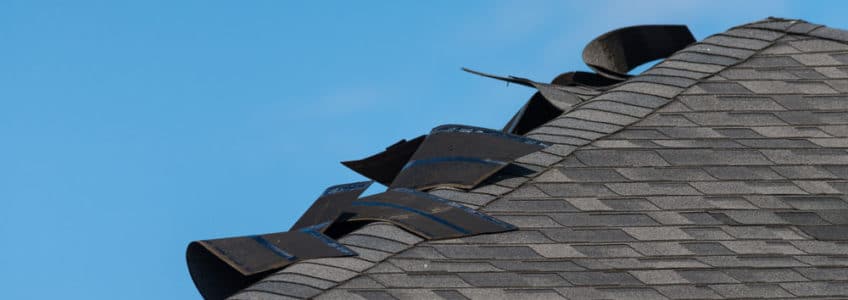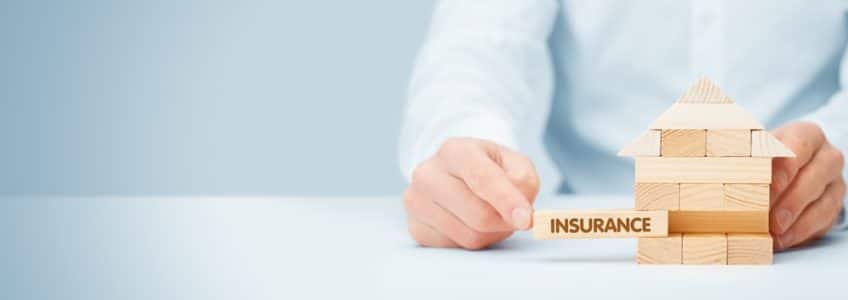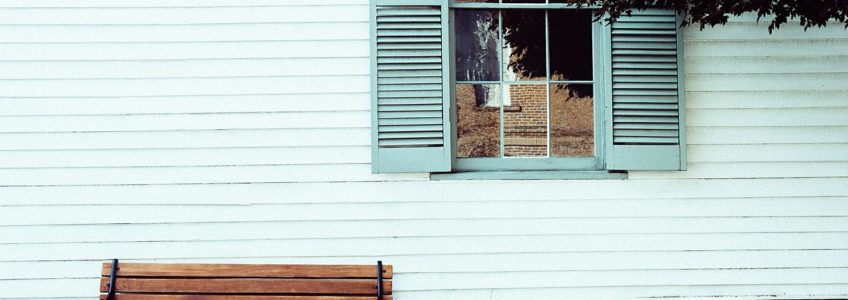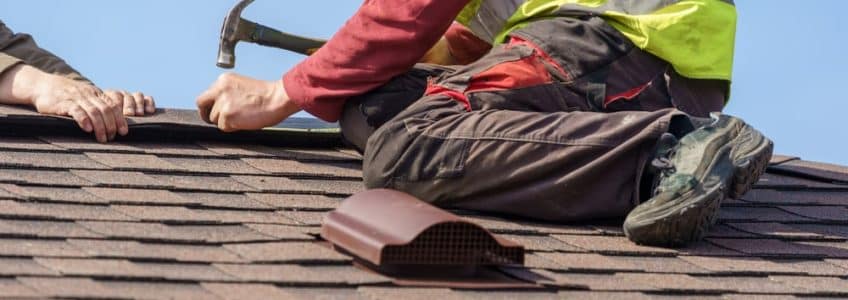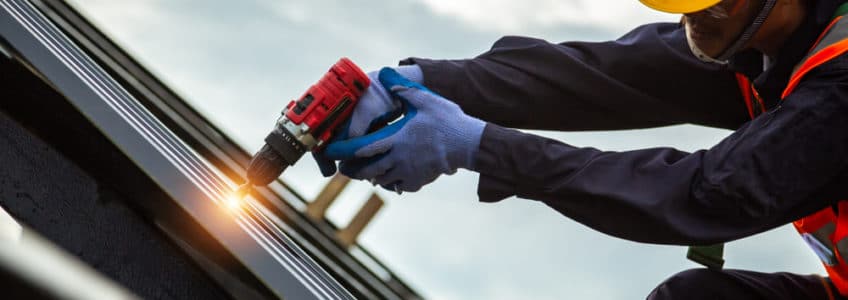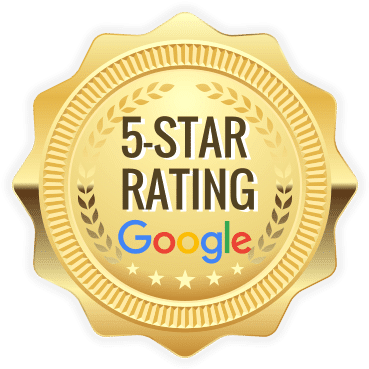Does a New Roof Help Energy Efficiency?
If you’re asking yourself, “will a new roof save energy?” The answer is that it certainly can. One key reason you should go ahead with a roof replacement is the energy savings you can achieve using newer materials installed by experts. Roofs today are much different than roofs even 20 years ago, which has translated into higher energy efficiency.
So, if you’re wondering if a new roof helps energy efficiency, here are a few ways your investment can help you instantly reduce your energy bill.
How Will a New Roof Save Energy?
The newer your roof and the more experienced the team that is installing your roof is, the more energy efficient it will be, which makes installing a new roof by a trusted team a great way to save on energy costs. Here are some of the reasons new roof energy savings are possible:
#1. New Insulation
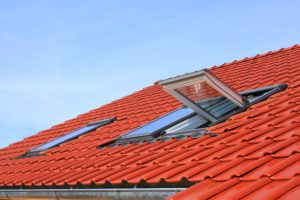
Chances are the insulation in your roof (if there is any) is old and newer technology works better at keeping warm and cold in or out. Recognizing extreme temperatures in your home despite constantly running the heating or central air conditioning could be a sign that it’s time to replace your roof. Proper roof insulation can be a major energy-saving resource as you have to spend less money heating or cooling to keep the rest of your home comfortable.
Better energy efficiency saves you money and energy by not having to heat or cool as often and also reduces wear and tear on your HVAC system. That prolongs its life and saves you money by not having to replace the HVAC components as often.
You can replace your insulation whenever possible, even if you do not replace your roof. Doing it during a roof replacement, however, addresses two needs at the same time.
Additionally, roofing materials are made better than ever, and part of that provides better insulation. That insulation helps keep warm air out in the summer and cold air out during the winter by creating a seal. It reduces the amount of moisture that can build in your attic by keeping humidity outside, and it protects your shingles from mold and rot, prolonging their life.
#2. Proper Ventilation
Ventilation and your roof work hand in hand, even if most people do not realize it. Common mistakes when installing a new roof can result in a loss of energy savings. Part of a roof installation is strategic venting to allow the roof to breathe. That lets hot air out in the summer, and it helps avoid ice dams during the winter.
When air cannot escape because of ventilation, your HVAC has to work much harder to cool the entire home because hot air rises, and if it cannot escape, it builds up. That makes it more difficult to cool hotter air on upper floors, so your HVAC works hard to address something that can be addressed just by adding proper ventilation.
When properly ventilated, your HVAC does not have to work as hard or as often, which cuts down on electricity costs, saving you money and saving energy at the same time. It also helps preserve the materials used in your roof, prolonging their lives by preventing underlayment from drying out, which saves costs by reducing costs for repair and replacement.
#3. Durability
Roofing has always been tough. It must withstand a constant onslaught of weather and temperature extremes to result in new roof energy savings.
While the interior of your house might be cool in the summer, your roof might be exceeding 150 degrees Fahrenheit. During the summer, that can happen day after day. In the winter, when you are warm, your roof endures ice, snow, and freezing temperatures. It also puts up with temperature fluctuations that can go from very hot to very cold in just a few hours during the fall and spring.
Does a new roof help energy efficiency, or is my durable old roof enough? While just about all roofing made from the 1980s on is extremely durable, roofing manufactured over the last 20 generally uses newer technology, and its strength is impressive. It simply puts up with weather extremes better than previous roofing materials. Additionally, a new roof can withstand the extremes of storms, resulting in less costs for storm damage repairs.
More durable materials mean your roof lasts longer, saving money over time. It also means your roof maintains its integrity in terms of new roof energy savings, saving energy, and energy costs. Many roofs today are built to endure heat from the sun better, resist high winds, and hold up better with ice and snow. They simply are built better.
#4. Solar Reflection
If you’re wondering how a new roof saves energy compared to older ones, one of the major updates to materials is solar reflection. Most roofing materials today reflect the sun’s rays rather than absorb them. Estimates are that high solar reflection on a roof can reduce temperatures by as much as 30 percent. Lowering surface temperature prolongs your shingles’ life and reduces the house’s overall heat.
Less heat to cool means running your HVAC less, the system lasting longer, and it being easier to cool your home in the winter.
One way to reduce solar absorption is by using colored shingles. Depending on your location, you can opt for some shingles and roofing materials that never absorb the type of heat that standard black shingles do.
#5. Modern Shingles Are Made Better
As with increased durability and lifespan, today’s shingles also have technology advancements that add to new roof energy savings. Most shingles come with an Energy Star Rating that indicates the materials used are as energy efficient as possible. Energy efficient materials mean you save money via longevity as well as because they have the Energy Star Rating.
Another benefit of roofing technology is that shingles’ wind rating has increased dramatically. Newer shingles can prevent wind damage more easily. In some cases, it can protect a roof up to winds exceeding 130 MPH. Not only will you save on repair and replacement costs, but these shingles also help warm and cool your home.
A roof that lets in the wind siphons off hot and cool air, depending on the season. That means your home is easier to heat and cool even during storms. By helping contain both better when appropriate, your HVAC does not work as hard. Just another reason why it’s a no brainer when asking yourself “does a new roof help energy efficiency?”
New Roof Energy Savings
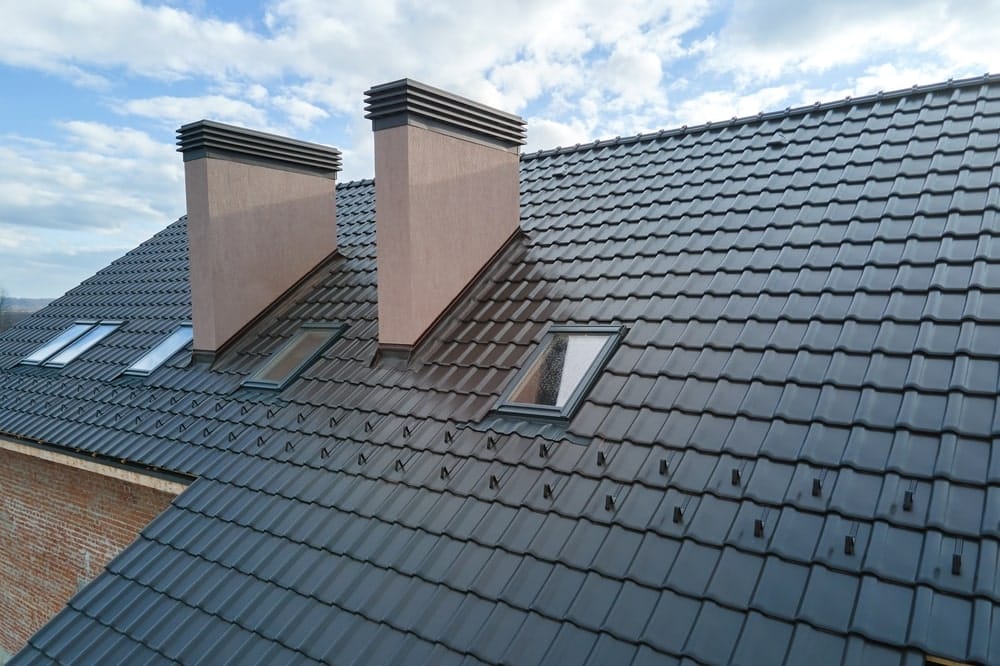
The bottom line to will a new roof save energy is that it can. With a trusted team and the advancements of modern materials, a new roof helps energy efficiency and increases durability as it adapts to current climates and temperatures.
If you notice that your energy costs are through the roof, quite literally, contact A to Z Construction today for a consultation.
Must-Know Roof Maintenance Tips for Homeowners to Make it Last
Taking out some time from your busy schedule to make sure your roof is in tip-top condition is always harder. But believe us, roof maintenance is not as difficult as you may think. Regardless of the roof type you have, a bit of care and effort can make it last longer for many years. proper inspection, maintenance, and addressing any roofing issues as soon as possible boosts the durability of your roof and increase its life span as well. Not all roof maintenance tasks need to hire professionals, because there is a lot you can do yourself with a ladder and some basic tools.
To help you avoid extensive roof repairs and enhance durability, we have listed some must-know roof maintenance tips to ensure your roof is in excellent shape.
Treat for Moss and Algae
Moss and algae growing on your roof can cause extreme damage. This usually occurs in shady areas of the roof in the summer season. Just check your roof for moss and algae on a regular basis and remove yourself or hire a professional to do so. You should also apply products that contain copper and zinc to keep the algae and moss from growing again in the future. This will keep your roof clean to prevent damage and leakage.
Clean the Gutters Especially in Extreme Weather Conditions
Gutters are the most important part of any property to keep water and debris away from the foundation and roof. This is the reason; cleanliness of gutters is imperative to keep the water off your roof. When rainy days arrive, make sure to check your roof for leaves, tree branches, and other debris and clean the gutter properly to make sure they will function well during the rain or storm. Experts recommend the cleaning of roof gutters twice a year to keep water flowing flawlessly. If there are trees and other plants around your home, you should check the gutters for cleaning quarterly.
Remove Leaves, Tree Branches, and Debris from Your Roof
Roof debris can cause blockage of rainwater that can lead to serious damages and issues. That’s why, make sure to remove things like leaves, tree branches, and debris from your roof to avoid damage and growth of moss and algae. Furthermore, heavy storms and disasters like hurricanes and tornadoes can cause tree branches and limbs to fly freely, which can also be damaging to your roof. Checking the roof for debris and removing it instantly is very much important in the rainy season. If there are some giant trees with branches hanging on your roof, you should hire professionals to trim them in the best way possible instead of doing it yourself.
Look for Leaks in Your Attic & Ceilings
Finding the water stains inside your home is another good way to find roofing problems and issues that need to be fixed immediately. So, make sure to check your attic and ceiling for water leakage and damages that can head off any expensive roof repairs. If you find any water stains and leakage signs on your ceiling or walls, contact the best roofing contractors in your area to locate the exact issues and get them fixed immediately.
Remove Snow from your Roof
Snow on your roof in a heavy amount can cause roof collapse or other issues if not removed instantly. Old and shabbier roofs are unable to bear a huge amount of snow on them. And removing the snow with help of a snow rack is the only solution to protect such roofs from damage. If there is extreme snowfall in your area, make sure to hire professionals for snow removal and relieve the weight from your roof.
Ensure Proper Roof Ventilation
A roof needs to breathe properly as we do. If there is a lack of proper ventilation on your roof, excessive heat and moisture can weaken your roof by allowing moss and algae to grow. This also decreases the overall effectiveness of your roofing system to reduce its life span. You can install a quality insulation system for this purpose and remember to clean your roof often to avoid moisture and water leaks due to debris and non-functional gutters.
Get a Professional Roof Inspection
Why you should pay roofing contractors when you have a roof inspection and maintenance checklist on your hand?
The answer is years of experience and expertise they have. They are better able to find out potential roofing issues and problems you may miss while inspecting your roof yourself. They also offer pro tips for better roof maintenance to increase the life span of your roof. Getting a professional roof inspection once in a year helps you spot minor issues before they become expensive repairs.
Hire Professional Contractors for All Roof Maintenance and Repairs
Professional roofing contractors are experienced to tell when you should perform a repair or replace your existing roof with a new one. Most homeowners prefer repairs instead of replacing a roof just to save time and money. But sometimes repairs are useless to improve the condition of a roof. This is where expert advice comes into handy. Roofing professionals like A-to-Z contractors give their clients honest advice on whether they should opt for a quick repair or they should replace the entire roof to save money and prevent potential damages in near future. Roofing experts are highly skilled and professionally trained about what to look for during roof maintenance, how to work with different roofing types and keep detailed records of roofing jobs done for their clients. Hiring professional roofing contractors gives peace of mind and saves money in terms of the increased life of your roof.
Final Words
Roof maintenance is not a big deal if you are aware of the important things to pay the most attention to. If you have found some serious issues that you cannot handle yourself, consider hiring a team of expert roofers so they can inspect your roof further to spot potential roofing issues and help you repair them accordingly without taking a toll on your budget.
How to Identify Wind Damage to Your Roof
Roof damage can wreak havoc on a home following a severe storm. Luckily, roof contractors and insurance companies deal with this issue regularly, but having the best roofing and construction company in your back pocket can make all the difference.
Roof repair starts with the homeowner. So how do you learn to identify wind damage to a roof?
Let’s start with a few of the basics of recognizing the signs of wind damage to a roof.
Inspection Comes First
Immediately following a severe storm, make an effort to inspect for any storm damage – especially if you heard debris hitting your roof. That inspection includes the actual roof of your home and the inside to check for leaks.
Roof damage can occur due to lightning strikes, heavy rains, and flying debris hitting your home – not just heavy winds.
But what are you looking for in your inspection? Be on the lookout for anything that can cause roof damage following a severe wind storm, including damaged or loose shingles, cracking, bubbling, or moisture damage.
Signs of Wind Damage to Roof
You should be able to spot if the wind has managed to damage your roof. Here are a few things to look for if you suspect roof damage from wind.
#1. Displaced Shingles
Out of all the things to look out for when identifying wind damage to your roof, displaced shingles are usually the first thing you will spot.
Fully displaced shingles will usually land on the ground around your home, remain in pieces on your roof, or will curl up on your roof. However, displacement may manifest in more subtle ways, such as buckling, cracking, cupping, blistering, or flaking.
#2. Gutter Damage
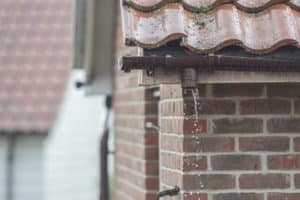
Your gutters are the first line of defense for keeping water away from your roof lining. Unfortunately, it can be easy for the wind to damage gutters by dislodging or ripping them off the sides of your home. Inspect the perimeter of your home. You may locate gutters on the ground or leaning against the side of your home.
A damaged gutter can compromise the fascia boards and cause water to leak into the roof lining, ceilings, or between the walls and the siding.
#3. Soffit and Fascia Board Damage
As we just mentioned, damage to your fascia boards can be caused by the gutters ripping off the sides of your home. However, a fierce gust of wind can have the power to tear the fascia boards off your home. Soffits see damage during storms as well.
A severely damaged fascia board or soffit can help wind get under your shingles and tear them off the roof. Getting a fascia board replaced is paramount following a severe storm.
#4. Flashing Damage
The flashing of a roof is another critical aspect of the overall structure. Flashing helps prevent water damage by directing water to gutters or off the side of your home. In addition, flashing is put under your shingles to provide another layer of protection.
Unfortunately, it can be prone to failure during severe storms. A powerful gust of wind can rip, bend, or tear a piece of flashing.
#5. Chimney Damage
A chimney is usually a densely constructed portion of your home’s structure. However, depending on the chimney’s age, a severe storm can cause severe damage.
Catastrophic damage is easy to spot, but there are subtle signs your chimney may have suffered damage. After a storm, if you notice water seeping through the chimney or near the joints between chimney and roof, the flashing may have been damaged. Similarly, if you notice water leaking down the chimney itself, then your cap may have suffered damage. If you see cracks in the brick or mortar of your chimney, there may be structural damage.
What To Expect If You Need Roof Repair After a Storm
Chances are, you will need to call a trusted roofing repair contractor for help if you are dealing with damage after a severe storm. However, you’ll also need to contact your insurance to inform them of the issues and learn more about your plan’s coverage.
If you determine help is necessary following your inspection, a team of experts will arrive at your home and perform a thorough inspection to see if any further roof damage occurred.
That rigorous inspection comes with more than a spot check of noticeable damage to your roof. A reliable construction team will use infrared cameras and moisture tests to see if the storm caused any water damage. Then, they’ll check your gutters for damage and clogs to ensure you receive a detailed analysis of any issues.
Following the inspection, customers should get a report and a recommendation on whether the roof needs repairs or to be replaced outright. A good construction team will not leave without touching base on what needs to be repaired and a plan of how much it will cost.
You may ask yourself, “Does insurance cover wind damage to my roof?” It depends on your insurance. A reputable construction team will work with insurance companies to establish a financial solution for you.
Once we all decide on a plan for your repair, A to Z Construction works with you to establish a time frame and how we plan to move forward. Then, once the repair is complete, you will rest easy knowing your roof has been repaired by a group of professionals with decades of experience.
There is no need to worry about cleaning up behind us, either. Our team will clean up around your home, so there is no threat of stepping on a roofing nail after we leave. Our work speaks for itself.
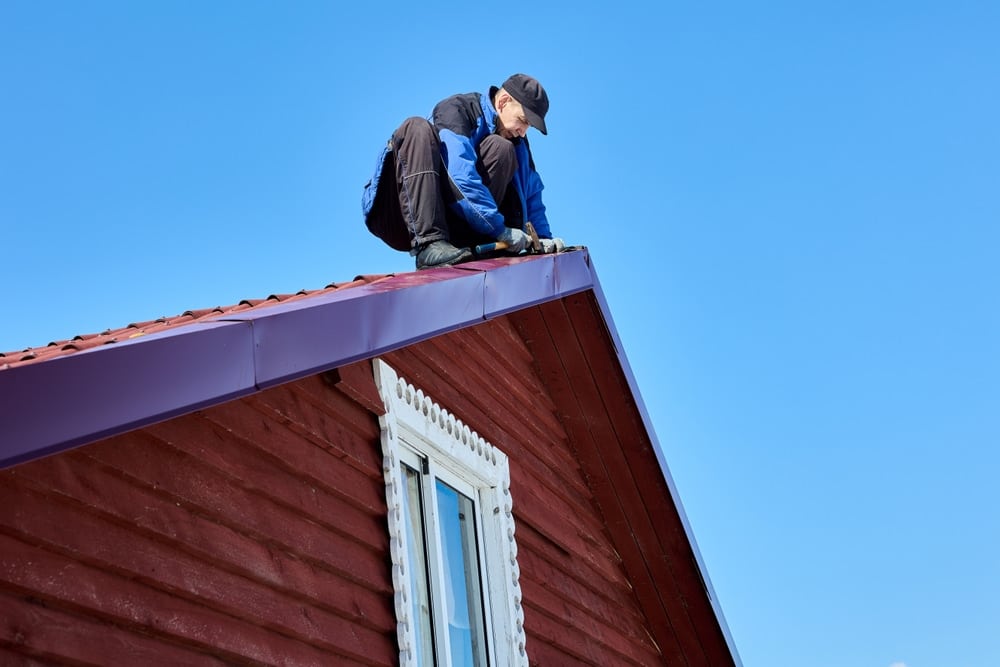
Contact A to Z Construction for More
A to Z Construction is a one-stop-shop kind of company when it comes to storm damage repair, roof installation, and maintenance. So if you feel any way about your roof following a severe wind storm, an inspection by us is an impactful way to reduce your anxiety.
Contact us today, and we will get you set up with a free roof inspection and a full report on what might need to be repaired or replaced.
For quality work and unmatched customer service delivered 24 hours a day and seven days a week, A to Z Construction wants to be your contractor of choice.
Does Insurance Cover Roof Damage From A Storm?
Powerful weather events like tornadoes and thunderstorms frequently damage roofs. Over the past several years, Minnesota storms have become more intense, increasing the instances of damage.
When severe weather harms your roof, your first question should be whether insurance will cover storm damage. This article will explain what to look for, what types of damage are covered by home insurance policies, and the process of claiming roof damage.
What Should Homeowners Look for When Their Homes Incur Wind or Storm Damage?
During a storm, your top priority should be staying safe indoors. When the weather clears, it’s time to check your roof. Be sure to check safely and wait for a contractor or insurance adjuster if access to your roof could pose a problem.
Roof damage insurance claims are common in Minnesota. The damage may be immediately apparent or need a detailed examination. It may require repairs if you hear loud noises or hail during the storm.
The damage may be evident if a tree has fallen on your home or if there are other openings. In this case, it is essential to have a contractor add a tarp to your roof to prevent further damage inside.
One of the top signs of a storm-damaged roof is water leaking inside the home. Even if your home was not affected by severe winds, shingles might need replacement. Even a few missing shingles due to hail or wind can cause damage to your home’s interior.
Other signs of possible roofing insurance claims for storm damage include:
- Loose shingle granules indicate damage. So do buckling or curling shingles.
- Small cracks may be hard to notice, but they do indicate damage as well.
- Roof components may be missing.
- There could be “bubbling” in your roof, also known as roof blistering.
- Damage to property or vehicles in your yard often points to roof damage.
- Cracked or leaking drywall is another sign of a storm strike.
- Floors in the home may be wet. Check all floors, especially in areas your family does not frequently use.
- Check all pipes, gutters and elements near the roof that could have received damage from the storm itself or from a part of the roof coming loose.
What Kind of Storm Damage Does Homeowners Insurance Typically Cover?
The top question that you may have is, “Will insurance cover storm damage?” Insurance will generally cover issues caused by severe storms, including thunderstorms, snowstorms, and hailstorms. You should file wind damage for roof insurance claims only in severe storms.
Homeowner’s insurance often does not cover hail damage to metal roofs. Insurance companies do not cover wear and tear due to ordinary weather events.
Be aware that standard homeowners insurance does not cover floods. Make sure you have special coverage for these issues if roofing insurance claims for storm damage do not apply.
How To Make Roof Damage Insurance Claims
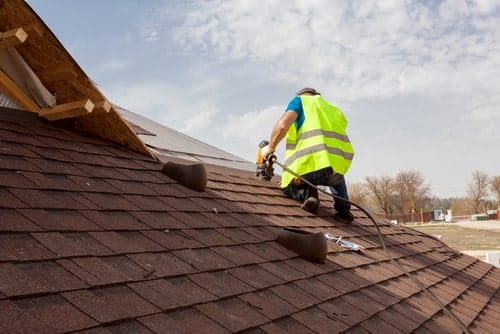
Making roof damage insurance claims can be complex. Insurers sometimes reject these claims. Let’s explore the process of claiming roof damage on your insurance.
Assess the Damage
The insurance company may request photos of all affected areas to determine whether insurance will cover storm damage. Do not take unnecessary risks to get the pictures. If conditions are dangerous, allow the insurance adjuster to take care of the job.
Examine Your Policy in Full
Before making a roof damage insurance claim, it is wise to read your policy and determine what is covered. To save money, you may have excluded wind and hail damage roof insurance claims. Hail damage claims do not apply to many metal roofing policies.
Call Your Insurance Company and Work With an Adjuster
The next step in making a roof damage insurance claim is calling your insurer. The sooner the company sees your damage, the earlier you receive the payout. Insurance covers storm damage in many cases.
Sent by the insurer, the adjuster should take their time and thoroughly inspect your home before filing a roof damage insurance claim.
Ask the insurance company to send another adjuster if you disagree. If you dispute with both adjusters, your insurance company will send an engineer to look at your property.
Get a Contractor’s Estimate
Don’t count on the insurance adjuster to tell you how much the repairs will cost. Their job is to “low-ball” the repair bill and save as much money as possible. Instead, work with a qualified contractor with experience in handling insurance companies.
Having A to Z Construction on your side means that our roofing experts will resolve your problem quickly. We will handle your hail damage roof insurance claim or any other issues with care.
Your insurance company will need a written estimate on company letterhead to process the claim. Do not get a verbal estimate, as the insurance company will not accept it.
Keep Complete Written Logs
Roof damage insurance claims need a solid paper trail. Insurance companies are notorious for claiming they did not receive your paperwork.
File Promptly
Roof damage can worsen over time if you do not repair it right away. It may also be harder for adjusters and contractors to see the problem if time has passed.
Frequently Asked Questions About Storm Damage Insurance
Here are some frequently asked questions about storm damage and roofs.
What should I do if a neighbor’s tree damages my roof?
Ask your neighbor to file a claim with their insurance company as soon as possible, as their insurance may be liable.
Does Homeowners insurance cover an unmaintained roof?
No. Companies only cover roof damage insurance claims after regular maintenance. Insurance does not cover wear and tear.
How much does a roof replacement typically cost?
Roof replacements cost $8,600 on average, however, this will depend on the size of your roof as well as the roofing material you choose. You may recoup the cost when you file a roof damage insurance claim.
Claiming Roof Damage on Insurance
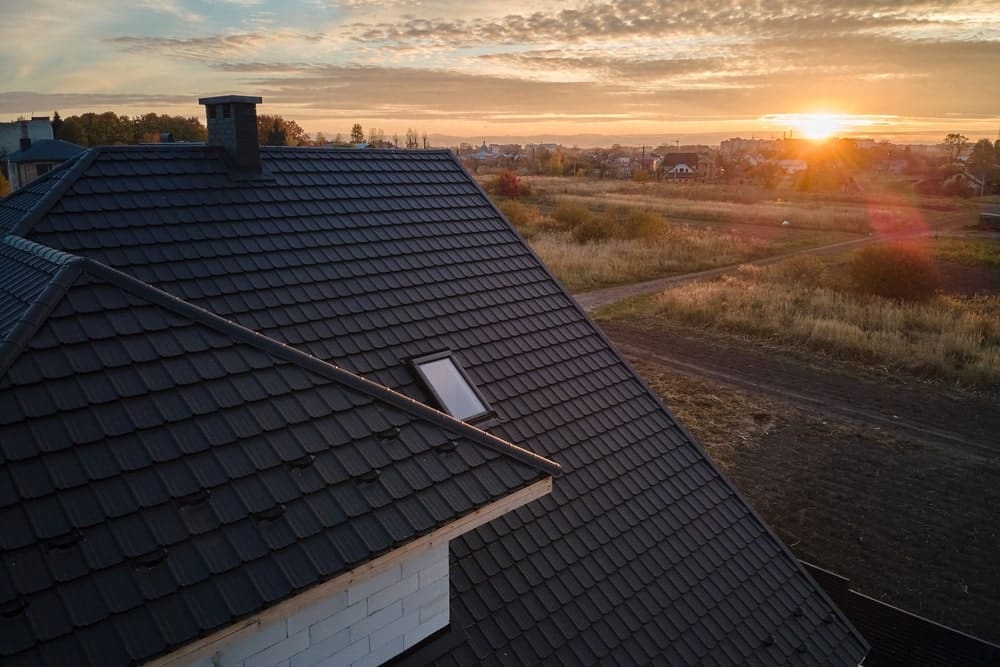
Everyone who has experienced severe weather wants to know whether insurance will cover storm damage. Following these tips can speed up your roofing insurance claim for storm damage. When faced with dangerous weather, Minnesota homeowners should contact A to Z Construction today for expert assistance.
The Advantages of Using Wood Siding Over Other Materials
Looking for a classy and durable look and feel for the exterior of your home? Then installing wood siding could be the best option to choose.
Choosing the right siding type and material is an important decision to make as it defines the overall appeal and feel of your home. This is the reason, you should consider the available options prudently and choose the siding material that suits the overall look of your home, aesthetic, maintenance, and most important your budget. If you want to give your home a rustic, sleek, and modern look, you can explore the infinite colors and finishes of wood siding available. It can also tie into your interior design if you have have a custom live edge dining table or other natural wood features inside of your home.
Since wood siding is known for requiring more attention, maintenance, and painting to protect it from damages, the benefits of choosing wood siding over other materials are myriad. Here is how the beauty of the real wood adds more value and character to your home while protecting your home from extreme weather conditions.
Enhanced Beauty with Sustainability
As sustainability is very much important in daily living, people look for more sustainable remodeling options for their personal properties. And wood is a highly sustainable and renewable source to make it the best and most environment-friendly siding material. For instance, cedar siding is one of the most commonly used types of siding and doesn’t require much treatment, processing, and maintenance. It is more durable than other woods like pine and is totally recyclable. Wood is an environmentally conscious material that gives your home a natural look. Whether you are about to get storm restoration work done or just want to give your home a new classy look, choosing wood as a siding material makes sense.
Make the Exterior of Your Home Stand Out
From modern to rustic, wooden siding can add more character and value to any home style. You can explore a variety of colors, styles, textures, and finishes to choose the best option that suits the overall layout and style of your home. Furthermore, you can also paint or stain wood siding every couple of years to change the look of your home without spending much. As you can buy high-quality wood material for your home siding, it can significantly increase the value of your home.
An Environmentally-friendly Option
If you want an environment-friendly siding material for your home, then nothing is better than wood. Installing wooden siding poses no hard or damage to the houses and properties around. Wood is also very easy to decompose. It spoils in nature automatically and then can be used in manure and fertilization. As there are different materials available for siding installation like vinyl, they are not so environment friendly. And if you are about to choose wood siding, then you are taking your part in doing good for nature and the environment.
Easy to Repair
Wood siding is always easy to repair. It is made of wooden blocks and if a hole is found in any block or any part, it can be fixed with putty in a matter of moments. Wooden siding is also installed using screws that one can easily tighten to keep it in good condition. If there is a problem with one block or a part of the siding is spoiled due to storm damage MN, the woodblock can easily be replaced. This makes repairing wood siding easier and more effective than other types of siding materials.
Excellent Insulation
Wood comes with great insulative features to help you a lot in energy saving. Wooden siding stops heated air from escaping to keep the interior of your home warm in winters. Similarly, conditioned air is also remained cooler for hours in summer. Wood like cedar also helps you protect the structure of a home from heat, cold, and dryness. Siding made of wood can last longer for many decades if maintained properly.
Durability for Wooden Siding
The durability and longevity of wood siding are undeniable. You can find high-quality wood in the market for your home siding to keep it strong and sturdy for many years. If you maintain and take care of your siding once every five years, the life and durability of the siding can be doubled. The durability of the siding also depends on the material to be used, so always choose high-quality material and hire a reliable siding contractor to get the siding installation work done effectively without compromising the quality. By doing so, you can keep the siding in tip-top condition for more than 30 years.
Best Wood for Siding?
As it is great to have a wide variety of options to choose from, choosing the right option can also be overwhelming and difficult. When it comes to choosing the best wood as a siding material for your home, pine, cedar, mahogany, and redwood are some popular options around the world. While all of them are widely used for siding across the globe, the original mahogany is the best one according to experts. its resistance to atmospheric changes and moisture makes it a perfect choice for home siding. Furthermore, a variety of stylish options also give your home a classy and modern look while maintaining a classic touch. It is the right fit for any home style.
Versatility
Siding material in the form of wood comes in a wide range of styles and colors. Homeowners can choose wood siding between shingles, woold lap, and clapboards to give the home exterior an excellent and durable look. Whether you want to give the siding of your home a boost in protecting extreme weather conditions or just want to add a charming feel, you can have endless options to choose from.
Conclusion
As siding installation can be an expensive home renovation or restoration project, you should always choose high-quality material and professional siding contractors to get the wood siding installed properly. You can schedule a call with the AtoZ construction team to get an expert opinion and assistance regarding siding installation or any other home renovation and restoration projects.
What to Do When Your Roof Leaks During a Storm
Have you ever wondered what to do if your roof is leaking during a storm? It’s a question many homeowners find themselves asking during inclement weather.
Your roof is one of the most important parts of your home. It protects you from the elements and keeps your family safe. That’s why you should take action when it starts leaking during ice and snow storms.
Storms can damage your home quite badly. Water alone can cause extensive damage to your home, both inside and out. Fortunately, there are a few things you can do to prevent further damage. Here’s what to do when your roof leaks during a storm.
Act Quickly
If you need to know what to do if your roof leaks during a storm, act quickly. Storms can cause incredible damage. If you see signs of a leak-whether you have a roof leak during an ice storm or your roof is leaking after an ice storm- take fast and decisive action. The longer you wait, the more damage the leak will cause. Not to mention, water can quickly spread throughout your home and cause additional damage. While everyone should know some basic emergency roof repairs, you may need to bring in an expert.
Protect the Interior of Your Home
Once you’ve noticed your roof is leaking during a storm, take steps to protect the interior. Move any valuables or sensitive items out of the way of the leak. Remove things such as:
- Paintings
- Electronics
- Important documents
Allowing interior items to become soaked can cause irreparable damage. Long-term damage may include mildew and mold. In addition, it’s a good idea to put down towels or other absorbent materials to help soak up any water that does make its way inside.
Ease Water Pressure on Your Ceiling
If your roof leaks during a storm, and your ceiling sags or shows signs of water damage, act fast to prevent further damage. One way to ease the pressure on your ceiling is to cut a hole. Doing so will help release some water and prevent your ceiling from collapsing.
You can accomplish this by using a utility knife or a saw. Be sure to cut away from any beams or supports. Once you’ve made the initial cut, you can use a piece of plywood or another board to create a larger opening. A screwdriver works well for this purpose.
Don’t create a large hole! Make it big enough to allow water to drain out but small enough that it won’t cause further damage. Use a bucket to catch any water that drains out and then empty it as needed.
Of course, this is not a permanent solution. It will buy you some time until a professional can come and take a look at the damage.
Look for the Source of the Leak
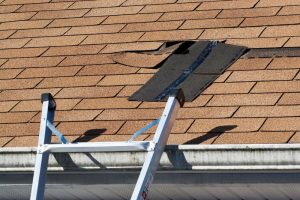
Once you’ve determined what to do if your roof leaks during a storm, turn indoors. After protecting the interior of your home, it’s time to start looking for the source of the leak. It isn’t always an easy task, especially if the leak is small.
The best place to start looking for leaks is in your attic. Look for any signs of water damage, such as stains on the ceiling or walls.
Another good place to look is around windows and doors. Gaps or cracks in these areas can often provide clues about the leak.
If you don’t have an attic, you can try to locate the source of the leak by going outside and inspecting your roof. Once you’ve found the source of the leak, it’s time to take action.
Tarp Your Roof
If your roof leaks during a storm, you need to protect it. One way to prevent further damage from a roof leak during an ice or snow storm is to tarp the roof. It will help keep water from coming into your home and causing additional damage. You can purchase a tarp at most hardware stores.
Some types of storms make climbing up onto the roof too dangerous. For example, if you discover a roof leak during an ice storm, you shouldn’t climb up on your roof. If you discover a roof leaking after a snow storm, it will be safer to go and inspect the roof.
Either way, you can use temporary tape or caulking instead of a tarp. These tools will close any gaps and prevent water from entering.
Take Photos for Insurance Documentation
One of the most important things to do if your roof leaks during a storm is to document the damage.
If there is damage to the interior or exterior of your home, take photos for insurance and roofing warranty documentation. The images will help support any claims you need to file with your insurance company. Take pictures of any damaged items as well as the source of the leak if your roof leaks during a storm.
Determine if Your Insurance Company Covers Water Damage
Depending on the type of insurance you have, your coverage may cover damage caused by a roof leak. Most homeowners’ insurance policies cover water damage caused by severe weather. However, they typically don’t cover damage caused by a lack of maintenance even if your roof leaks during a storm.
If you’re not sure whether your policy will cover the roof leak, contact your insurance company.
Call a Professional Roofing Company
Still wondering what to do if your roof leaks during a storm or if your roof is leaking after a snow storm? Once you’ve taken all the necessary steps to prevent further damage, it’s time to call a professional roofing company. A professional can assess the damage and make any necessary repairs.
Keep in mind that repairing a roof leak after a snow or ice storm is not always a quick and easy process. In some cases, the damage may be extensive, and you may need to replace your roof entirely.
Continue Regular Roof Maintenance
After repairing your roof if your roof leaks during a storm, you should continue regular maintenance. Taking this action will help prevent future leaks and other damage. Be sure to have your roof inspected at least once a year.
You should also clear away any debris that accumulates on your roof. Objects like leaves and branches can cause water to pool on your roof. Debris can lead to leaks and other damage.
If you live in an area with severe weather, you may need to take additional steps to protect your roof. For example, you may need to install hurricane straps or tie downs. These tools help keep your roof secure during high winds.
By taking these precautions, you can help prevent future roof leaks during a storm or going through a stressful time during a heavy storm.
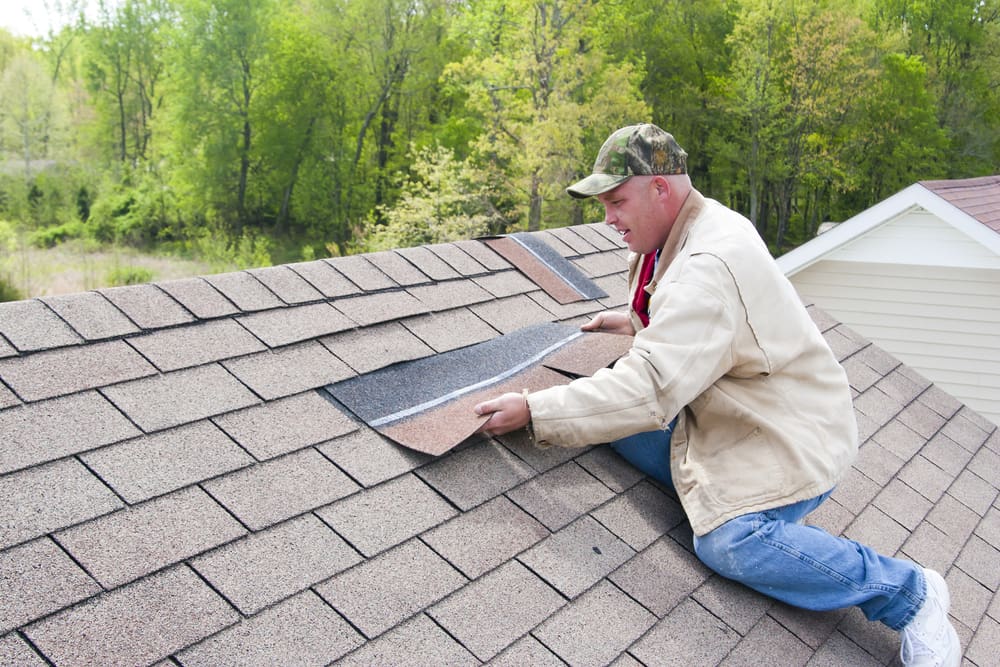
Final Thoughts
Now you know what to do if your roof leaks during a storm. Don’t wait to take action. Use these tips to prevent further damage and call a professional roofing company as soon as possible. If your roof has started leaking during a storm or you want to speak to an expert about how to prevent this from occurring, A to Z Construction is here for you. Contact us today to talk to a team member!
What to Look for When a Storm Damages Your Home
Extreme weather can happen at any moment, leaving your home vulnerable to damage. Unfortunately, homeowners can face costly repairs even without seeing massive destruction to their residences. Inspecting a home for storm damage after severe weather can ensure that unknown problems will not become expensive repairs later.
Performing a Storm Damage Inspection
After experiencing extreme weather, the first thing a homeowner should do is perform a storm damage inspection. This process entails both outside and inside examination to take note of any possible issues.
Some situations that will require you to examine the state of your home for damage include:
- Flooding
- Fallen trees
- Lightning strikes
- Heavy rains
- Flying debris from high winds
- Excessive winds
Knowing what to look for and where to look can save you time and money when you are inspecting a home for storm damage immediately after the event. In addition, the sooner you can determine issues, the quicker you can get to repairs to minimize future problems.
A Step-by-step Guide to Inspecting a Home for Storm Damage
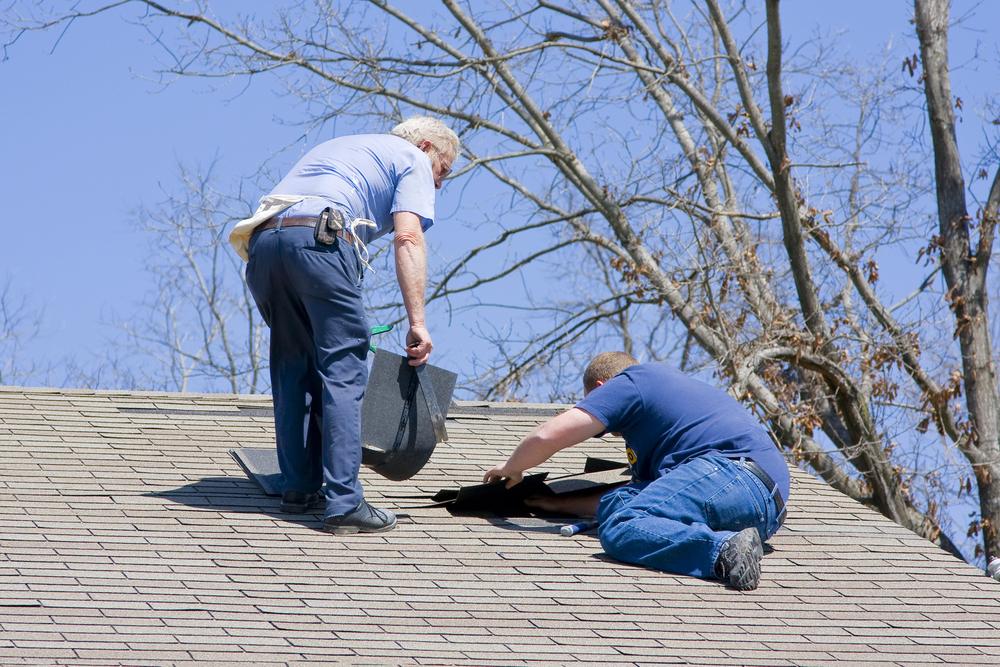
Assessing any damage your home incurred due to a recent storm will indicate what you will deal with for cleanup and repairs. Handling the aftermath of severe weather can be problematic if you don’t know where to start.
Here is a simple step-by-step guide to inspecting your home for storm damage you can follow the next time extreme weather hits.
- Step 1: Make Sure Everyone Is Safe
- Step 2: Look for Harmful Debris
- Step 3: Examine the Roof’s Condition
- Step 4: Look at the Home’s Exterior
- Step 5: Check Out the Windows
- Step 6: Explore for Yard Damage
- Step 7: Check the Air Conditioner and Electrical Appliances
- Step 8: Look for Water Stains or Spots Inside
- Step 9: Examine the Attic, Basement, and Crawl Spaces
- Step 10: Call Your Insurance Company
Step 1: Make Sure Everyone Is Safe
Before heading outside to start looking for storm damage, you want to make sure you and everyone in the home are safe. Broken or fallen power lines can be deadly, so avoid these areas until a professional can secure them.
Step 2: Look for Harmful Debris
Do any trees have broken branches or fallen in your yard during the storm? Often with severe winds, items will blow around and cause damage to nearby structures. A proper storm damage inspection will include debris in your yard or around your home.
Step 3: Examine the Roof’s Condition
Thankfully, you do not have to get a ladder and start climbing your roof. Instead, walk around the outside of your home and look at the roof for debris. See if you notice any missing or broken shingles or areas where they raise up.
If you have a chimney, see if the metal flashing material around it is dented, raised up, or missing.
Step 4: Look at the Home’s Exterior
While inspecting a home for storm damage, see if you have any siding damage or visible problems with your eaves, gutters, and downspouts. Broken or clogged gutters and eaves can cause damage to your home long after a storm if water cannot correctly drain away from your roof.
Step 5: Check Out the Windows
Do you have any broken or cracked windows? Inspect each outside window frame and glass for cracks, breaks, holes, or separation with the edges. These issues can create further problems if water can enter your home due to cracks or gaps between the house’s walls and a window.
Step 6: Explore for Yard Damage
Many homeowners will have other structures in their yard. When inspecting a home for storm damage, examine garden sheds, kids’ playhouses, fencelines, and anything else in your outdoor living space that may have issues.
Step 7: Check the Air Conditioner and Electrical Appliances
If you have an air conditioner for your home, check out the entire unit. Look for broken pieces, disconnected hoses, or leaking water from the unit. Do not operate it until you are sure it is in proper working condition.
Next, examine your electrical appliances in the home. Some major appliances can sustain electrical damage during lightning storms. Check the plugins where they sit for any charring or burnt marks and see if you detect an electrical smell in those areas.
Step 8: Look for Water Stains or Spots Inside
Do a thorough walk-through of your home and examine the walls and ceilings for any water stains or wet spots. These areas can indicate a leak from outside. If you have any roof damage, take extra care to examine the ceiling below those damaged sections.
Step 9: Examine the Attic, Basement, and Crawl Spaces
Many homeowners will overlook their attic and crawl spaces, only checking the basement for flooding. While you must inspect the lower levels of the home, do not forget to check the attic and crawl spaces for signs of water. Often roof damage or cracked siding can leak water into these areas before it reaches inside your home.
Step 10: Call Your Insurance Company

Once you complete your storm damage inspection, take stock of any visible damage your home has, and make a call to your insurance company. Be sure to write down any issues you found and keep records of problems with your home.
Depending on the damage and your insurance company, they may send an adjuster right away.
Inspecting a Home for Storm Damage Is Vital
Navigating cleanup and repairs after a severe weather occurrence can be exhausting and costly, depending on the damage your house suffers. Following this storm damage inspection checklist can help make this stressful situation a little easier for homeowners.
Remember that if you are not comfortable inspecting a home for storm damage or there is a risk of injury due to debris, a call to the professionals is a safe and reliable option. Storm damage experts can assess your property for any possible damage and help get your home cleaned up and back to new quickly. If you need a reliable contractor for your storm damage inspection, contact A to Z Construction today.
Commercial and Residential Storm Damage: A Quick Resource
After a storm rolls through, you might find storm damage on your commercial or residential property or building. Storm damage in MN can be something small, such as broken tree limbs scattered about, or more comprehensive, including roof storm damage.
You might need storm damage repairs, but you don’t know what your next steps are. This quick resource answers your questions about residential and commercial storm damage, so you can confidently take the next steps:
Read MoreReasons You May Need To Hire Metal Roofing Contractors
The roof is one of the integral parts of your home and keeps your possessions protected and safe. While many homeowners use asphalt shingles for their residential roofs, metal roofs are also becoming a trend these days for many good reasons. According to industry experts, metal roofs are more energy-efficient, come with a longer lifespan and have a lesser impact on the environment. But a poorly installed metal roof may not last longer than you expected. This is the reason, you must hire professional roofers to get the job done efficiently.
Reasons to Hire Professional Metal Roofing Contractors
There are many reasons you need to hire professional metal roofing contractors for your roofing project and some of them are listed below in this article.
Metal Roofing Installation Requires Special Techniques
Metal roof installation is quite different from roof shingles installation. Metal roofs are not the same as other roofing systems and require special techniques to be installed properly. And if you hire general roofers to install a metal roof, they may not be experts to complete the job capably. This is the reason, hiring professional metal roofing contractors is always a good idea to get your metal roof installed as it should be. They are equipped with all the essential techniques and tools to complete the project without facing troubles and workplace accidents.
Ensures the Longevity and Quality of Your Metal Roof
Regardless of the roofing systems, materials are not cheap. Some roofing materials are less expensive than others but overall roofing costs are a huge investment throughout life. Experts say that metal roofs are to last for 40 to 60 years. The installation process can also have a direct impact on the longevity of your metal roof. When installed improperly, metal roofs can cause expensive repairs and damages. Therefore, you must work with the right professionals to get the job done as planned. Professional metal roofing contractors are more of an investment and can make your roof last longer.
Concerns with Safety Are Mitigated
Safety is one of the major concerns when it comes to roof installation. Risks of accidents and damages are higher when you try to install or repair metal roofs yourself. Certain tools and specific installation techniques are required to complete the job successfully. But you may not have enough skills and necessary tools to do it yourself.
Accidents happen during roof installation projects and can cause several injuries and damages to the properties. It is challenging for an inexperienced person to focus on the installation while still trying to avoid falling off the roof simultaneously. Professional metal roofers are insured and equipped with essential safety gear and tools to do the job without facing accidents. Since they are insured, they are better able to cover on-site injuries and property damages in case anything unfortunate happens. So, make sure to hire properly licensed and insured metal roofing contractors for your next metal roofing project to avoid unnecessary expenses and on-site accidents.
Ensures the Metal Roof Lasts
Since metal roofs are sturdy and can last longer, they must be installed properly with help of the right tools and techniques. Hiring expert metal roofers is the only way to make sure your roof is installed properly for an extended span of life. When you choose to DIY metal roofing installation, you might end up paying lots of money (in terms of repairs or replacements) in the long run. Professionals ensure that your metal roof lasts longer and is well maintained for increased endurance. This also helps you make sure you get the best services that are worth your money.
To Avoid Collateral Damage
As it is mentioned earlier, installing a metal roof yourself can compromise the quality and endurance of your roof. Some people also hire general roofers for metal roofing installation to save some bucks on the installation process. General roofers might have years of experience in general roofing installation and replacements, they might not have enough expertise and knowledge on how to install metal roofs skillfully. Improper installation can end up with issues like water damage and leaky roofs etc. That’s why; you should hire licensed metal roofing contractors like A to Z Construction Inc which specializes in metal roof installation and replacement. They are licensed and insured to keep their employees and your property safe from damages.
Faster Project Completion
Professional roofers with years of experience are better able to install or replace metal roofs faster than DIY enthusiasts or general roofers. They not only offer their services with better industry knowledge but are also equipped with all necessary tools and safety gear to do the job in the best way possible. Inexperienced individuals or general roofing contractors take more time to install metal roofs because they lack the essential skills and expertise for perfect metal roof installation. Along with installing a metal roof accurately, they also help you maintain metal roofs for increased longevity and durability.
Quality Work
Quality comes with perfection. When you hire professional roofing contractors with specific skills and experience in metal roofing, they are better able to complete the installation process faster without compromising the quality of work. They are passionate to make sure the clients are delighted with the quality of work. Therefore, they use the right tools, roofing materials, safety gear, and techniques to install or replace metal roofs capably. This not only completes the work in a timely manner but increases the longevity and endurance of the roof as well.
Wrapping Up
Roofing is one of the major investments and you cannot afford a single mistake. Choosing a metal roof for your personal or commercial property is a good choice as it lasts longer and is energy efficient as well. Hence, it is also important to hire metal roofing contractors instead of hiring general roofers to get the project completed in a timely manner without compromising the quality of work. So, spend enough time choosing the right metal roofers for your next project. If you need metal roofing services in twin cities MN, feel free to contact us for a free quote or estimate or call our experts for consulting.
Hear From the Pros: What to Expect During Your Storm Damage Inspection
Your roof is a complex system. Once a tree limb has torn through your home’s shingles, you may have several different reasons for concern. For example, different types of weather can expose your home to damaging elements that impact the integrity of your roof. Storms can create leaks, damage flashing or gutters, and affect the structural integrity of your roof.
While you may not be able to prevent damages from inclement weather, there are steps you can take after a storm to protect your home before another one rolls in.
At A to Z Construction, we understand that storms happen. When they do, our roofing contractors are here for you every step of the way. We work with homeowners throughout the Minnesota area to provide a full spectrum of storm damage inspection and repair services. We want to make sure that your roof is repaired before the next storm rolls in so that we can return your home or business to normal as quickly as possible.
In this article, we’ll talk about what to expect during a storm damage inspection and how it will benefit you in the long run. We’ll also talk about why you need the assistance of a storm damage professional.
But first, let’s cover the basics.
How Can a Storm Damage Your Roof?
When a storm passes, it’s not just the high winds and rain that can damage your roof. Storms can be damaging in other ways too, such as:
Feather Tree Branches
High winds may uproot trees. If these trees fall on your home’s roof, they could cause significant damage. Feathery tree branches that catch the wind can severely damage your roof as well.
Storm Surge and Flooding
Did you know a strong storm surge or flooding can increase the force of the water on roofs? A breaking wave will push a wall of water toward land, which often includes anything in its path – including your home’s roof. Flooding can also cause internal damage like warped floors, walls, and ceilings which may need to be attended to.
Severe Winds
High winds can damage your home’s roof in several ways. If the wind is strong enough, it could peel back shingles or even tear them right off your home’s frame. High winds can also turn your roof into a sail that’s pushing your home in the opposite direction.
Ice and Snow
Snow and ice can also cause significant damage to your roof. If snow piles up too fast or melts and refreezes during winter, it can put tremendous pressure on your entire roof structure. Maybe you’ve heard of the term “snow load,” and that’s what we’re talking about here.
Hail Damage
Hail can damage your roof too. The hail size doesn’t necessarily matter; most homes’ roofs aren’t built to withstand such a beating.
While all of this is scary, don’t panic. You can take proactive measures to help protect your roof and avoid additional damage.
The Inspection Process During the Wake of a Storm
Now that you know what can damage your roof during a storm, let’s discuss what to expect during an inspection.
At A to Z Construction, we use infrared cameras and moisture inspections as part of our regular checkups for our customers. These tools help our roofing pros diagnose problems that may not be so easy to spot when walking around on your roof.
In addition, we’ll check your gutter systems for any damage or clogs when inspecting your property after a storm. Our team will also walk over the exterior of your home in search of anything that might disrupt the structure. We ensure our work is efficient, fast, and 100% free of damage to your foundation or yard.
After recording all the findings, we’ll present you with a detailed report and go over it with you – answer any questions you may have about what was found and how it could affect you in the future.
After reviewing this report, our team members will offer the necessary repairs to restore your home to its pre-storm condition.
Why You Need A Professional For Your Storm Damage Inspection
A storm damage inspection is definitely something to be concerned about. But why should you trust your home’s roofing assessment to an experienced and professional team like the pros at A to Z Construction?
Experience
Having worked with homes throughout the Midwest, we know what signs to look for. Using top-of-the-line infrared cameras and moisture detection technologies, our inspection process is thorough. However, don’t just take our word for it – check out some customer reviews to find out why people come back over and over again.
Quality Assurance
At A to Z Construction, we believe in doing things right the first time around. We carefully document and measure all of our findings to ensure a quality roofing inspection every time.
Attention to Detail
While the wind is rattling your windows, you won’t have time to focus on what’s going on with your home’s foundation or exterior. That’s why we’ll walk over to your property after the storm to make sure everything is in order. If we find anything, our team will let you know right away.
Why You Need The Inspection After a Storm
Protecting Your Investment
Your roof is one of the most essential components of your home. It can impact your energy efficiency, your resale value, and even the comfort of your living space. That’s why you should consider investing in a seasonal storm damage inspection by an expert like A to Z Construction. These inspections help determine if there are damages to be fixed, and they also help you prevent future problems with your roof.
Understanding Your Roof’s Condition
Moisture inspection is one of the most essential components of a storm damage inspection. This tells your roofing company if there are any leaks or issues with your gutters to attend to. If your roof is leaking, you may not even know about potential damages under the surface. Your inspection will point these out, so they don’t become a problem later down the line.
Contact A to Z Construction Today
An ounce of prevention is worth a pound of cure. That’s why it’s so important to have an expert roofing company inspect your home after a storm passes. For quality services and peace of mind, rely on the pros at A to Z Construction. We are available to help you 24 hours a day, seven days a week.
Contact us now to receive your free quote for an assessment of your home’s roofing, foundation, and exterior.


